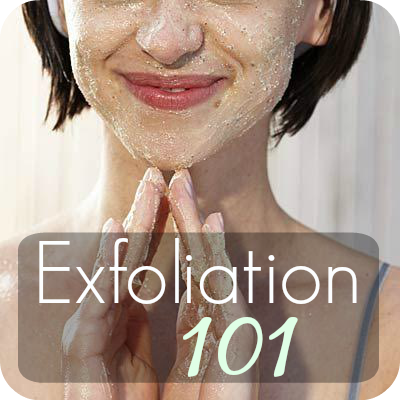Why
exfoliate?
Your
skin sheds on a daily basis. Gross, we know. When dead skin collects
on the surface of the skin it can leave it looking rough, cracked,
tough or (in the case of the face) just plain dull. By exfoliating,
you remove skin that has built up or is past its best, allowing the
natural radiance of the skin underneath to shine through for all to
see. It’s considered by many to be an integral part of your beauty
regime that shouldn’t be avoided. Make a special effort to
exfoliate before applying fake tan as this can cut down on the
dreaded streaky effect.
What
kinds of exfoliators are there out there?
There
are two types of exfoliators you can use to condition your skin. The
first is manual. This uses some sort of rough bead or fibre or indeed
even items like salt or sugar to slough away the dead cells from the
surface of your skin. You can also use a certain piece of kit such as
a loofah or exfoliating gloves to achieve the same effect. There are
also a number of chemical products which will achieve the same effect
- these usually tend to be used on the face instead of the body.
These usually contain glycolic acid, which is gentle enough to remove
dead layers without damaging the skin underneath.
How
often should you exfoliate?
The
idea is that you don’t take off healthy new skin so, due to the
cycles it goes through, for your body it should be around once a
week. For the face it can be once or twice a week depending on your
skin type. If your exfoliator contains glycolic acid you should be
more cautious and only use this once a week. Don’t be tempted to
overdo exfoliation, as this can leave skin red, irritated and in
severe cases, broken.
How
do you do it?
When
it comes to exfoliating your body, a good first step is to have a
bath or a shower. This will open your pores and make skin softer and
easier to remove. Take a sponge and apply a little of your exfoliator
to this. Start at your feet and work your way up the body in a
circular motion using the sponge. When you feel like the product
might be running low, top up your sponge - don’t be afraid to be
generous with it. Pay particular attention to rough areas such as
knees, elbows and even the backs of arms, which can need a little
more work. Once you’ve finished, make sure to rinse off all residue
from the surface of the skin. Pat dry and then apply a moisturiser or
body oil to ensure that the skin is in tip-top condition.
For
your face, start by pressing a warm facecloth over the skin to open
the pores. The skin on your face is a little more sensitive so you
shouldn’t go too wild with the scrubbing. Instead, still using a
light circular motion, apply product to the face, taking care to
avoid the eye area and paying attention to areas like the side of the
nose where oil and debris can build up. Depending on whether you are
using a natural or chemical product, you might be advised to leave it
on for a few minutes to allow it to work before rinsing off and
patting dry. Always pay careful attention to the instructions when
using chemical exfoliants as if you leave them on for too long they
can end up irritating the skin.
If
you have sensitive skin and find that you have to use particular
sensitive skin products the best advice is to buy an exfoliator
specifically for sensitive skin and try it on one area first before
using it all over your face. That way, if you have a reaction it will
be limited.
Is
there any advised aftercare?
When
it comes to the body, always make sure to add moisturising in as a
final step. To protect the new skin you’ve revealed, take extra
care to wear a high SPF suncream, which you should always be wearing,
but of course you knew that.
Anything
else to bear in mind…
Recently
there has been some controversy about synthetic microbeads used in
some exfoliating products. They don’t break down and when we flush
them down the shower they end up polluting rivers and lakes. They can
be eaten by fish and wildlife, causing them damage. Because they are
so small they are almost impossible to remove from these areas too.
The US has already passed a bill banning these and other countries
look set to follow. When picking out an exfoliator with beads in it,
try to pick out something which has a biodegradable bead rather than
a synthetic one.
Guest post by Aran Sweaters Direct


No comments
Post a Comment